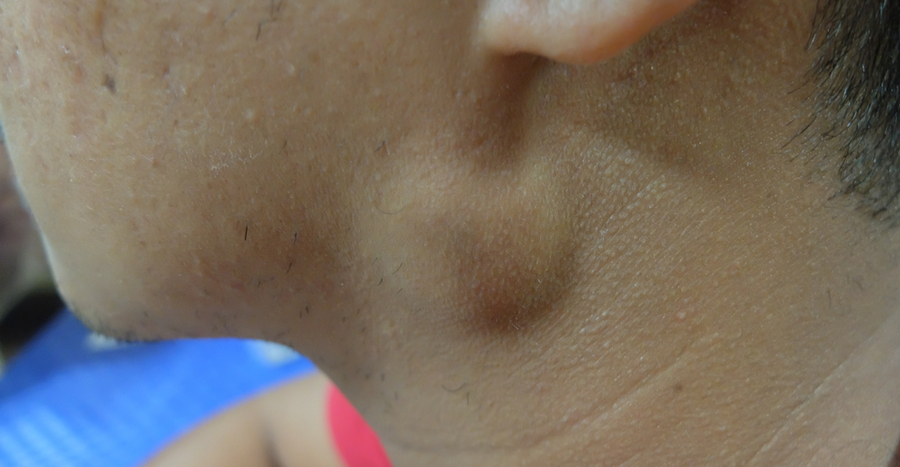Nodules or masses of the salivary glands are some of the more common “lumps and bumps” we see. The major salivary glands include the parotid, submandibular and sublingual glands and may produce abnormal salivary tumors. These glands are responsible for creating saliva to keep the mouth lubricated and help keep the teeth healthy. The glands produce two kinds of saliva – thin serous and thick mucinous saliva – that are carried into the mouth through little delivery ducts. Infections of the glands are common, but usually resolve after treatment.
Nodules or tumors may grow in the glands as well though. Salivary tumors usually are benign non-cancerous, but about 10-20% of these may in fact be a life-threatening cancerous growth. Also a problem with the non cancerous growths is that they may continue to grow, causing a large nodule, compressing nerves, and get more difficult to remove in the future. A certain subtype of these called pleomorphic adenoma can actually further mutate and become a highly deadly cancer decades in the future. Other benign subtypes include oncocytoma, warthin tumor, and monomorphic adenoma.
We will often biopsy salivary glands in the office with fine needle aspiration. This takes only a few minutes are is usually pretty good at determining how aggressive a nodule looks. A problem with the needle biopsies though is that they are sometimes incorrect for salivary cancers, especially low-grade cancers. Meaning, if you have a salivary growth of some kind, the needle biopsy and CT scan may help some, but you still should probably have the nodule removed (parotidectomy, superficial parotidectomy, or excision of the submandibular gland) no matter what for accurate sampling and to prevent it from growing in the future.
Removing salivary lesions is a bit more complicated than it seems because of close proximity to the facial nerve branches and other critical structures in the upper neck. This is done under general anesthesia, and often involves electrical monitoring of critical nerve structures. Many times an graft of belly fat or cadaver material may be used for parotid surgery to restore symmetry of the face. Surgery is usually between one and three hours depending on how much microscopic nerve dissection is required, and whether or not cancer is suspected.

